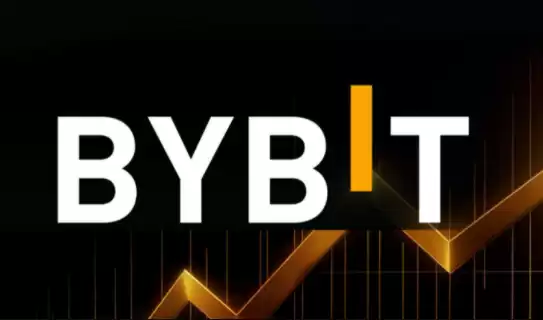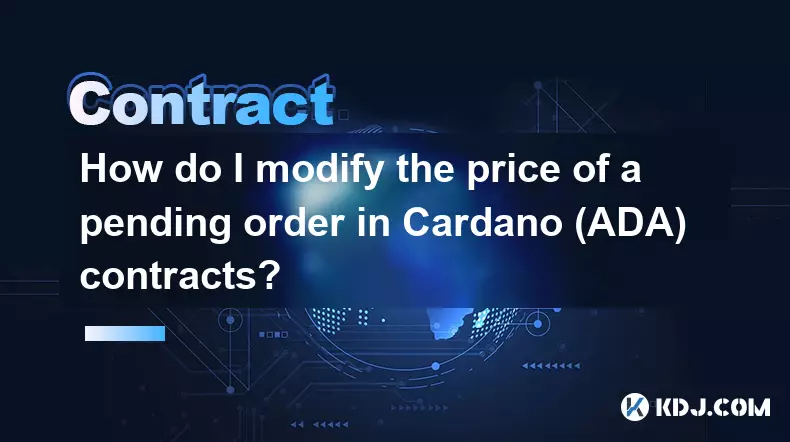-
 bitcoin
bitcoin $109667.069529 USD
-3.03% -
 ethereum
ethereum $3936.685804 USD
-4.07% -
 tether
tether $1.000493 USD
0.01% -
 xrp
xrp $2.771823 USD
-4.74% -
 bnb
bnb $957.805027 USD
-5.34% -
 solana
solana $196.735100 USD
-6.68% -
 usd-coin
usd-coin $0.999727 USD
-0.01% -
 dogecoin
dogecoin $0.227355 USD
-5.12% -
 tron
tron $0.335205 USD
-0.81% -
 cardano
cardano $0.779256 USD
-3.59% -
 ethena-usde
ethena-usde $0.999900 USD
-0.06% -
 hyperliquid
hyperliquid $42.492095 USD
-6.61% -
 chainlink
chainlink $20.501853 USD
-4.34% -
 avalanche
avalanche $28.952606 USD
-11.21% -
 stellar
stellar $0.356038 USD
-3.93%
How to read the K-line of a contract on Bybit
For effective cryptocurrency trading, interpreting Bybit contract K-line charts is essential, providing valuable insights into price movements, market sentiment, and potential trading opportunities.
Nov 14, 2024 at 11:35 am

Delving into the intricacies of cryptocurrency trading necessitates a thorough understanding of technical analysis tools. One indispensable aspect of this analysis is the study of K-line charts, which provide valuable insights into price movements and market sentiment. This guide will delve into the world of Bybit contract K-line charts, empowering you with the knowledge to interpret these charts effectively and enhance your trading strategies.
Step 1: Understanding the Basics of K-line Charts- K-line charts are visual representations of price movements over a specified period, typically ranging from minutes to months.
- Each candle on the K-line chart depicts the open, high, low, and close prices for that particular time interval.
- The body of the candle represents the difference between the open and close prices. A green candle indicates a price increase (close price > open price), while a red candle signifies a decrease (close price < open price).
- The wicks extend above and below the candle body, representing the highest and lowest prices reached during that period.
- Time Interval: Bybit allows traders to customize the time interval of the K-line chart. Selecting an appropriate interval depends on the trading strategy and market volatility.
- Candle Patterns: K-line charts feature various candle patterns that can provide insights into market sentiment and potential price movements. For example, a hammer candlestick indicates a potential trend reversal, while a shooting star pattern suggests a potential decline.
- Moving Averages: Moving averages are technical indicators that smooth out price fluctuations and help identify potential support and resistance levels. Bybit provides a range of moving averages, including simple moving averages (SMA) and exponential moving averages (EMA).
- Volume: The volume indicator measures the trading activity for a particular time interval. High volume often accompanies significant price movements and can indicate market sentiment.
- Relative Strength Index (RSI): The RSI is a momentum indicator that ranges from 0 to 100. It helps identify overbought or oversold market conditions, as well as potential price reversals.
- Identifying Trends: K-line charts can help identify prevailing trends by observing the direction and duration of price movements. A series of higher highs and higher lows indicate an uptrend, while a series of lower highs and lower lows indicate a downtrend.
- Recognizing Support and Resistance: Support refers to a price level below which the price tends to bounce, while resistance refers to a price level above which the price struggles to break through. Analyzing K-line charts can identify potential support and resistance zones based on previous price movements.
- Spotting Chart Patterns: Chart patterns are specific formations on K-line charts that can provide insights into the likely continuation or reversal of a trend. Examples include triangles, flags, and pennants. Recognizing these patterns can enhance trading strategies by anticipating potential price reversals.
- Using Technical Indicators: Technical indicators complement K-line charts by providing additional insights into price movements, market momentum, and potential trading signals. Combining K-line analysis with technical indicators can provide a more comprehensive view of market dynamics.
- Define a Trading Plan: Having a defined trading plan that outlines entry and exit strategies, as well as risk management protocols, is crucial before using K-line analysis for trading decisions.
- Consider Multiple Time Frames: Analyzing K-line charts on different time intervals can provide insights into both short-term and long-term market trends. Combining multiple time frames helps reduce noise and identify potential trading opportunities.
- Practice and Experiment: Proficiency in K-line analysis requires practice and experimentation. Using a demo account or smaller trade sizes allows traders to test their strategies and gain experience without incurring substantial risks.
- Stay Updated with Market News: Incorporating market news and updates into your analysis can provide additional context to K-line chart interpretations. This can help identify potential factors driving price movements and make informed trading decisions.
Deciphering Bybit contract K-line charts empowers traders with valuable insights into market dynamics and price movements. By understanding the basics of K-line charts, identifying key elements, interpreting charts for trading decisions, and following best practices, traders can leverage this powerful tool to enhance their decision-making process and potentially increase their profitability in the cryptocurrency market.
Disclaimer:info@kdj.com
The information provided is not trading advice. kdj.com does not assume any responsibility for any investments made based on the information provided in this article. Cryptocurrencies are highly volatile and it is highly recommended that you invest with caution after thorough research!
If you believe that the content used on this website infringes your copyright, please contact us immediately (info@kdj.com) and we will delete it promptly.
- APEX Token & LCX Exchange: Listing Trends and Insights
- 2025-09-27 00:45:16
- DRV Token's Wild Ride: Dilution, Debate, and the LCX Exchange Listing
- 2025-09-27 00:45:16
- Ruvi AI's Solana Surge: Daily Sales Explode, Leaving Giants Behind
- 2025-09-27 00:50:01
- Aster Exchange's XPL Token Price Glitch: What Happened?
- 2025-09-27 01:05:16
- Aster Exchange's XPL Token Price Glitch: A Deep Dive into the $4 Flash
- 2025-09-27 00:50:01
- Plasma Mainnet Launch Surge: XPL Token Skyrockets with Binance, Tether, and Chainlink Support
- 2025-09-27 01:20:18
Related knowledge

How do I enable the "scalping-only" mode for Cardano (ADA) contracts?
Sep 24,2025 at 03:19am
Understanding Scalping Strategies in Crypto Derivatives1. Scalping in cryptocurrency trading refers to executing multiple short-term trades within min...

What is the maximum position limit for Cardano (ADA) contracts?
Sep 23,2025 at 11:00pm
Understanding ADA Futures and Derivatives Market Structure1. Cardano (ADA) futures contracts are offered by several major cryptocurrency derivatives e...

What is the maker fee for Cardano (ADA) contracts?
Sep 26,2025 at 09:01am
Understanding Maker Fees in Cardano (ADA) Contracts1. The concept of maker fees applies broadly across decentralized exchanges and smart contract plat...

How can I view open interest in Cardano (ADA) contracts?
Sep 24,2025 at 07:36am
Understanding Open Interest in Cardano Derivatives1. Open interest refers to the total number of outstanding derivative contracts, such as futures or ...

How do I modify the price of a pending order in Cardano (ADA) contracts?
Sep 27,2025 at 01:00am
Understanding Pending Orders in Cardano Smart Contracts1. Cardano operates on a proof-of-stake blockchain that supports smart contracts through its Pl...

What is the function of the insurance fund in Cardano (ADA) contracts?
Sep 24,2025 at 02:18am
Understanding the Role of Insurance Funds in Cardano Smart Contracts1. The insurance fund within Cardano's ecosystem is not a native feature directly ...

How do I enable the "scalping-only" mode for Cardano (ADA) contracts?
Sep 24,2025 at 03:19am
Understanding Scalping Strategies in Crypto Derivatives1. Scalping in cryptocurrency trading refers to executing multiple short-term trades within min...

What is the maximum position limit for Cardano (ADA) contracts?
Sep 23,2025 at 11:00pm
Understanding ADA Futures and Derivatives Market Structure1. Cardano (ADA) futures contracts are offered by several major cryptocurrency derivatives e...

What is the maker fee for Cardano (ADA) contracts?
Sep 26,2025 at 09:01am
Understanding Maker Fees in Cardano (ADA) Contracts1. The concept of maker fees applies broadly across decentralized exchanges and smart contract plat...

How can I view open interest in Cardano (ADA) contracts?
Sep 24,2025 at 07:36am
Understanding Open Interest in Cardano Derivatives1. Open interest refers to the total number of outstanding derivative contracts, such as futures or ...

How do I modify the price of a pending order in Cardano (ADA) contracts?
Sep 27,2025 at 01:00am
Understanding Pending Orders in Cardano Smart Contracts1. Cardano operates on a proof-of-stake blockchain that supports smart contracts through its Pl...

What is the function of the insurance fund in Cardano (ADA) contracts?
Sep 24,2025 at 02:18am
Understanding the Role of Insurance Funds in Cardano Smart Contracts1. The insurance fund within Cardano's ecosystem is not a native feature directly ...
See all articles










































































